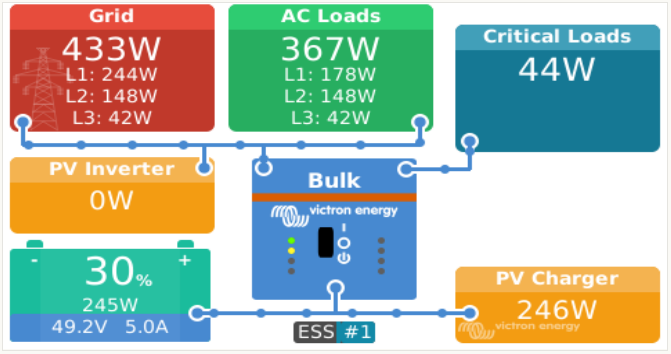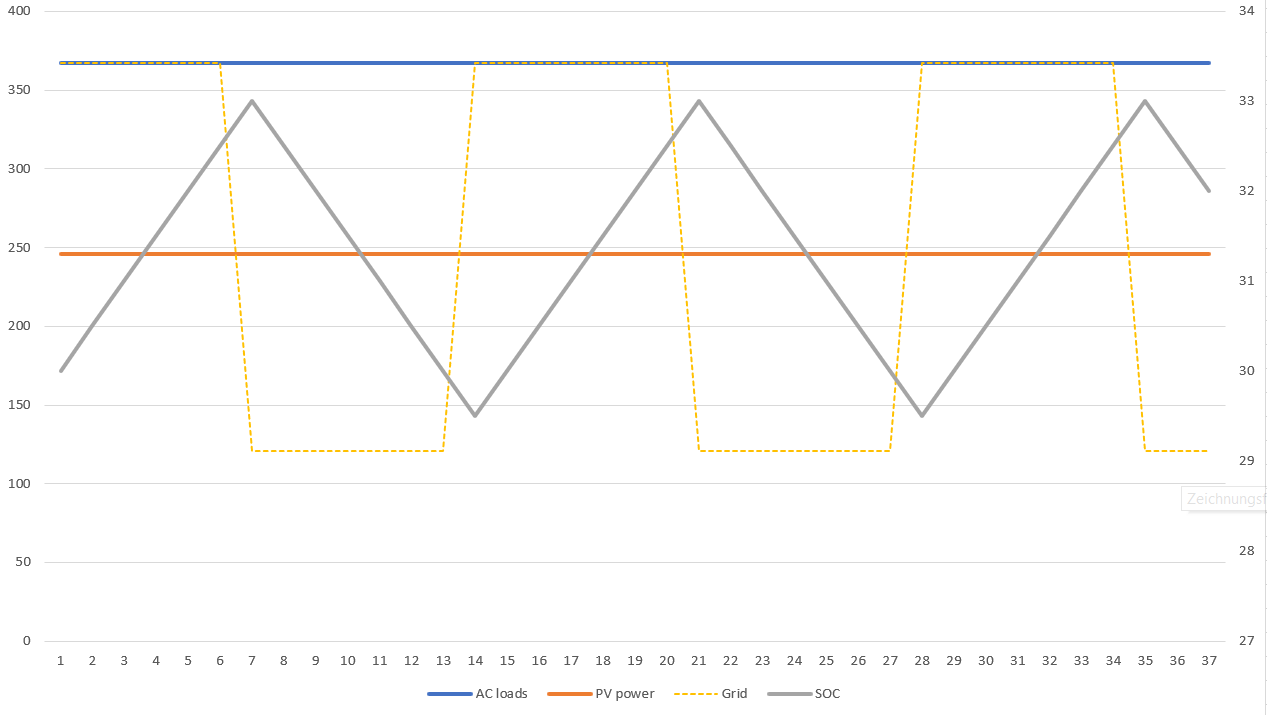I'm using
- VenusOS 2.73 on Raspberry Pi
- ESS
- Multiplus II 48/3500/35
- SmartSolar Charger MPPT 250/70 rev2
- Pylontech US2000C batteries (7.2kWh)
On cloudy days, when there is a less energy from PV and the battery is already at "empty" (ESS#1), all the energy is used to charge the battery and AC loads (+critical loads) and supplied completely from the grid.
 When the minimum soc level +3 is reached and ESS#1 is gone, the AC loads are supplied from PV and battery.
When the minimum soc level +3 is reached and ESS#1 is gone, the AC loads are supplied from PV and battery.
When the PV power is less than the AC loads (see number in the picture above), the battery will be discharged again.
Then after a few hours, the minimum soc level is reached again, ESS#1 is raised and all AC loads are supplied from grid again. And all PV power is used to recharge the battery.
This leads to continuous charging and discharging of the battery, on some days multiple cycles per day.
What I want to configure/do is, that in ESS#1 state, all the PV power is used to supply AC loads (+critical loads).
Just the excess energy should be used to charge the battery.
This would lower or even prevent the described charge-discharge cycles and it would increase the efficiency, since the energy is not stored in battery first, but is used immediately.
I'm familiar with coding, so if there is no config-way to achieve it, there may be a way coding way to achieve it.
[UPDATE] I've added daemon service that introduces the desired behaviour by controlling venus user setting "max inverter power" over dbus, see GitHub: https://github.com/t0bias-r/venusos_acload_prioritize

